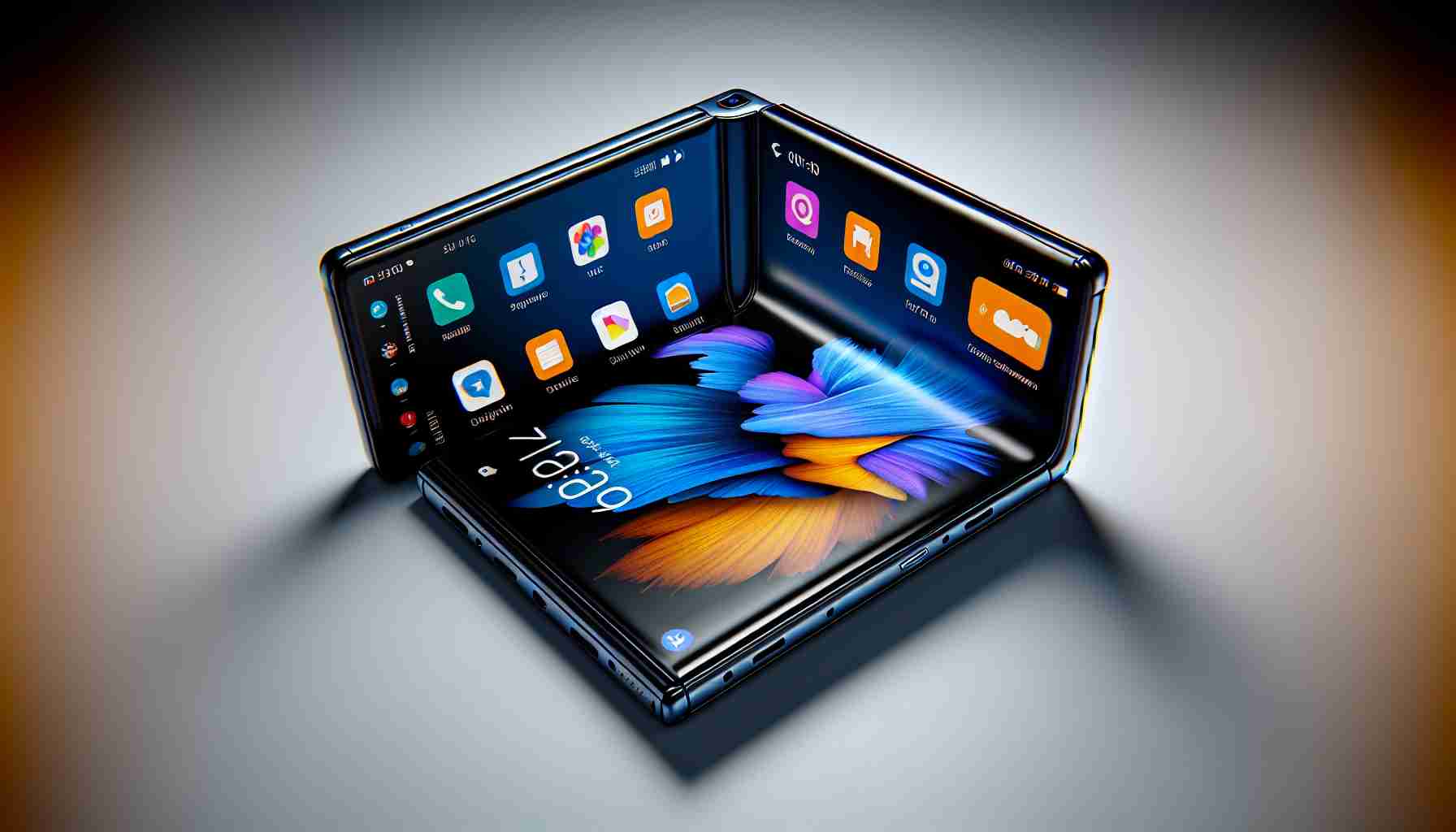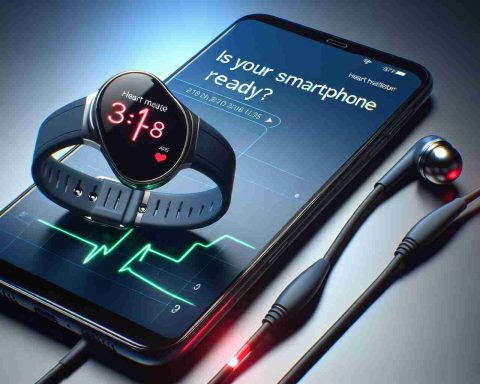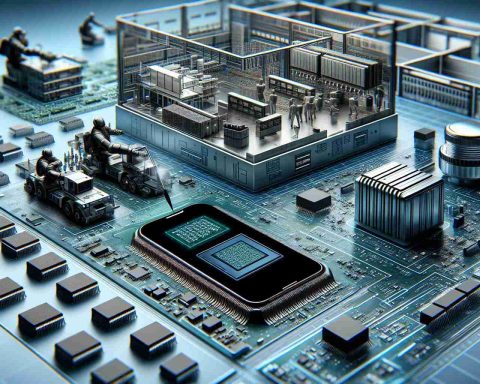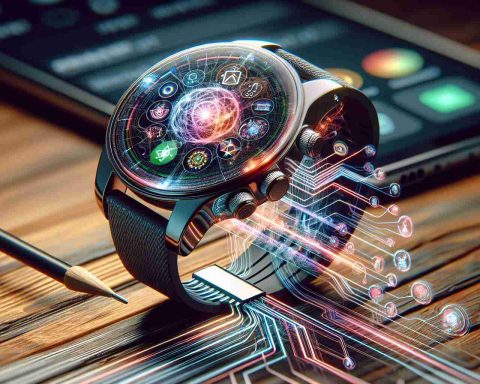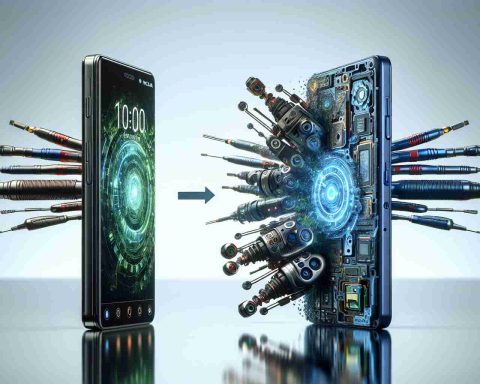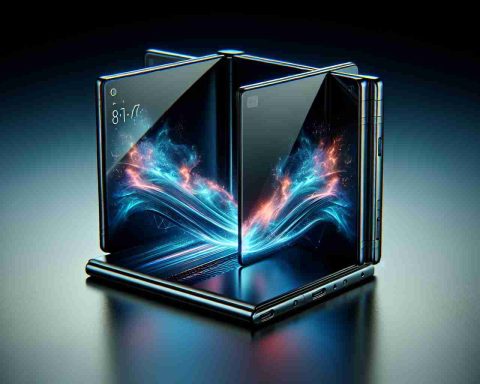In an era where the cost of foldable smartphones typically soars around 4,000 shekels, Blackview breaks the mold with its innovative Hero 10. This newcomer stands out by offering a sleek flip-style folding phone at just 2,000 shekels, making it much more accessible to the everyday consumer. Though not widely recognized, Blackview is a Chinese manufacturer with over a decade of experience, known for crafting durable devices with a rugged design meant to withstand harsh conditions.
Design and Display: Resembling the nostalgic flip phones of yesteryear, the Hero 10 doesn’t unfold into a tablet but opens into a standard smartphone size with a generous 6.9-inch display. Its weight, approximately 200 grams, is noticeable, and while the phone fits snugly into your pocket when folded, the external screen offers minimal utility. This small circular display shows time, battery status, notifications, and a music app interface, but its limited size and small font can make reading difficult.
Technical Features: Powered by the Mediatek Helio G99 processor, complemented by 12GB of RAM and 256GB of storage, the Hero 10 delivers satisfactory daily performance, although it heats up during prolonged gaming sessions. The display features vibrant colors and a maximum brightness of 1,300 nits, though sometimes overly bright under various conditions. The device lacks a headphone jack and eSIM support but accommodates two physical SIM cards. Operating on Android 14 with Blackview’s DokeOS 4.0, the interface is user-friendly despite minor connectivity issues between its internal and external displays.
Battery and Performance: The 4,000 mAh battery depletes relatively quickly, necessitating daily charges. Fortunately, the 45-watt fast charger included charges the device impressively fast, reaching 50% in about 15 minutes.
Camera Capabilities: Equipped with a 108-megapixel main camera and an 8-megapixel secondary lens, alongside a 32-megapixel selfie camera, the Hero 10’s photography hardware delivers basic image quality, falling short of current high expectations.
Overall, while Blackview’s Hero 10 brings retro flair with its flip-function and an enticing price tag, it may not fully meet the technological demands of today’s savvy smartphone users.
Why the Blackview Hero 10 Flip Smartphone is Turning Heads—And Raising Eyebrows
In the rapidly evolving world of smartphones, the introduction of the Blackview Hero 10 is noteworthy not only for its competitive pricing but also for the broader implications of such a device on the market and beyond. This article delves into how the Hero 10’s release affects consumers, communities, and the tech industry at large, exploring the unmentioned aspects and sparking conversation about this unique device.
Unmentioned Features and Implications:
One notable feature of the Blackview Hero 10 is its commitment to durability, aligning with the company’s reputation for rugged devices. This characteristic could potentially appeal to users in professions that demand sturdier hardware, such as construction or fieldwork, where standard foldable phones might not withstand everyday wear and tear. Additionally, it’s worth noting that the Hero 10’s affordability doesn’t come at the cost of sacrificing basic functionalities, opening up possibilities for a broader demographic to experience the futuristic appeal of foldable technology.
Impact on Communities and Economies:
The Hero 10’s affordability has the potential to make foldable smartphone technology more accessible to lower-income communities, leveling the playing field and perhaps driving innovation through wider adoption. This could spur economic shifts in countries where smartphone penetration is a key driver for digital economies. For businesses, the more budget-friendly family of smartphones may mean reconsidering company-issued devices, leading to potential savings without compromising functionality.
Interesting Facts and Controversies:
One fascinating aspect of Blackview’s approach lies in its challenge to longstanding brand hierarchies. Traditionally, tech giants have dominated the foldable phone market, but Blackview’s entrance could disrupt this status quo, inviting competition and potentially lowering prices across the board. However, the choice to omit certain features, such as a headphone jack and eSIM support, might stir controversy among loyal tech aficionados who see these as essential. Additionally, the device’s heating issue during gaming and the less-than-dazzling camera performance might raise eyebrows amongst the tech community, questioning whether cost savings justify these trade-offs.
Advantages and Disadvantages:
Among the Hero 10’s advantages, the most appealing are its price point and robust design, offering a tactile experience reminiscent of beloved past devices. Fast charging is another significant plus, especially for users who are frequently on the go.
However, disadvantages include its rudimentary external display and the noticeably quick battery drain, which could be a dealbreaker for users used to more uncompromising performance. The phone’s average photographic capabilities further emphasize its budget status.
Questions and Answers:
– Who is the Blackview Hero 10 ideal for?
– It’s perfect for consumers looking for an affordable introduction to the foldable phone market, especially those in industries requiring more rugged devices, or for users nostalgic for the flip phone design.
– Does it compare with high-end foldable phones?
– Not quite. While it offers a comparable foldable design, its technology and performance levels are more modest, aligning with its accessible price point.
– What does its release mean for the smartphone industry?
– It signals potential democratization of foldable smartphones, pushing competitors to rethink pricing strategies and cater to a more diverse customer base.
For further tech insights, visit GSMArena or explore broader tech discussions at TechCrunch.

